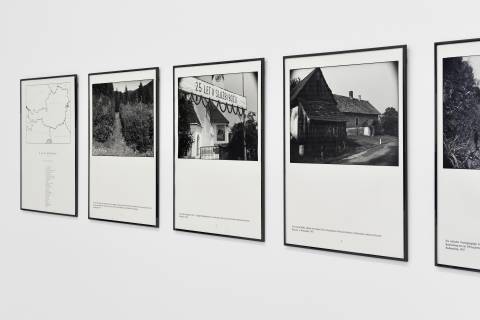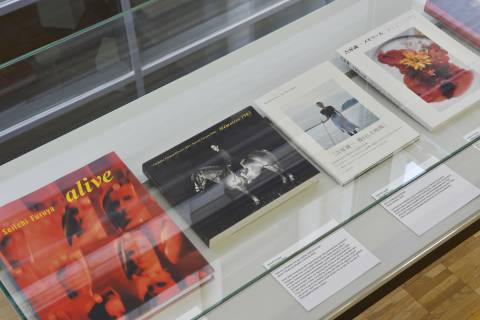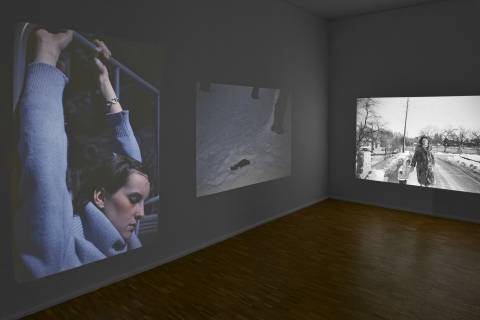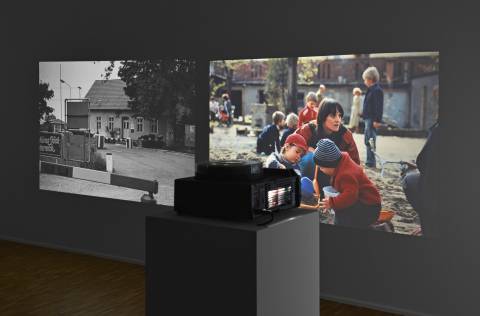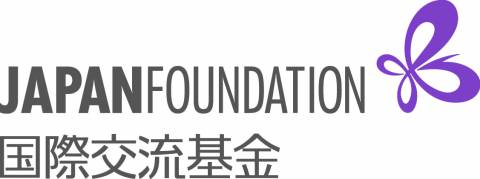In the area of tension surrounding biography and remembrance work, archive and publication, the exhibition shows two central works by Seiichi Furuya: The photo series Staatsgrenze (Border) and the image archive Mémoires.
Staatsgrenze. Between 1981 and 1983, Furuya travelled to the border between Austria and the so-called “Eastern Bloc” states – Czechoslovakia, Hungary and Yugoslavia. At first glance, this border seems harmless – “It is even beautiful, romantic, inconspicuous. But in the stillness of the landscape you sense the quiet, sad facts even more strongly than you do there”, Furuya observes in his comparison between this place and the concrete brutality of the Berlin Wall. The texts that accompany his photographs – quotes from the press, from interviews with border officials and local residents – refer to incidents at the state border, clearly disclosing the real violence it represents.
Mémoires. After leaving Japan and moving to Austria in 1973 and marrying Christine Gössler in 1978, Furuya settled down in the GDR with his wife and their son in 1984 to work as an interpreter. He took photographs of his wife as part of an almost daily routine, producing a large number of images portraying family life and the urban living environment. This image archive takes on a special significance when Christine commits suicide on 7 October 1985, during the celebrations to mark the 36th anniversary of the GDR. Between 1989 and 2010, Furuya creates five books in which he seeks to understand the events by placing the photographs into a different order over and over again. This process of reviewing the photographs, which at the same time gives rise to an important contemporary document, is shown in slide projections running alongside one another.
The book plays a central role for Seiichi Furuya as the ultimate format for the presentation of his photos. The exhibition presents the five publications featuring Mémoires, along with the book Staatsgrenze 1981-1983, published by Spector Books Leipzig in 2014.

